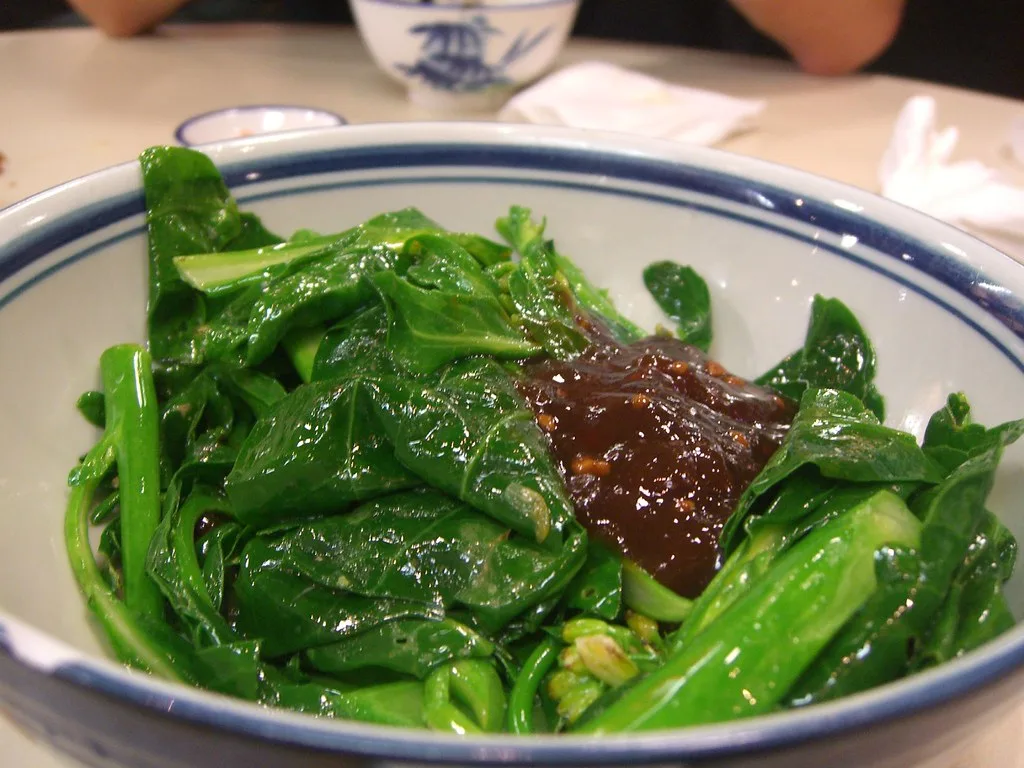In a Nutshell:
- Shelf life: 2+ years unopened, 6-12 months opened for best quality
- Common spoilage signs: off smell, mold growth, altered taste and texture
- Storage methods: cool, dark place unopened; refrigerator after opening
For some people, imagining life without a trusty bottle of oyster sauce is tough. But if you’re reading this, chances are you’re not one of them.
Instead, you struggle to finish a half-open bottle of that thick brown sauce and want to make sure you’re getting the most out of it. And that’s what this piece is all about.
In this article, we will dive into the shelf life, spoilage signs, and storage methods of this fish sauce alternative. So, let’s keep that oyster sauce bottle in tip-top shape and ensure we’re getting the most out of its savory goodness.

Table of Contents
- How Long Does Oyster Sauce Last?
- What Affects Oyster Sauce Shelf Life?
- How to Tell if Oyster Sauce Is Bad?
- Changes You Shouldn’t Worry About
- Does Oyster Sauce Need to Be Refrigerated?
- How to Store Oyster Sauce
How Long Does Oyster Sauce Last?
Oyster sauce typically comes with a shelf life of 18 to 24 months, and it stays safe and tasty for months beyond the best-by date. After opening, the sauce should retain quality for at least 6 to 12 months, especially if refrigerated.
That’s the gist of it.
Now, let’s get into the details.
Unopened Oyster Sauce
Isn’t it a beautiful sight? That unopened bottle of oyster sauce, just waiting to elevate your stir fry or marinade.
Just kidding – if you’re reading this, you probably don’t yet have a gazillion ways to use the sauce, and that’s why it’s been sitting untouched in storage for months.
Well, the good news is that if you store oyster sauce in a cool, dark place (think pantry), it will easily keep for months beyond the “expiration” date.
Yes, that means that consuming expired oyster sauce, meaning one that’s past the date on the label, is usually perfectly fine. You just need to give the condiment a quick once-over to ensure its safety, and you’re off to the races.
(We cover how to tell spoiled oyster sauce from one that’s safe to use later in the article.)
Of course, if your oyster sauce is like two years expired, and you’re not comfortable using it, you should toss it. Better safe than sorry.

Opened Oyster Sauce
An opened bottle of oyster sauce can retain quality for 6-12 months if refrigerated and sealed tightly. That’s the industry standard.
That said, the recommendations vary between brands. Some, like the Golden Dragon Sauces, say that their sauces are best within a year of opening. Others, like Kikkoman, have much more conservative estimates of only a month or so.
Of course, the sauce won’t go bad right after that period passes, but the longer you store it, the more likely its quality will suffer.
As you can tell, this storage time is comparable to other condiments, like ketchup or mustard.
What Affects Oyster Sauce Shelf Life?
Let’s dive into some factors that can affect the shelf life of the sauce.
Expiration Dates
Here’s the thing: expiration dates for oyster sauces are more of a “best quality by” guideline. Your oyster sauce will still be good to use even if it’s a bit past its prime, but the flavor might be less potent.
It’s like using fish sauce or soy sauce that’s been sitting around for a while – still works, but maybe not as punchy.
Storage Conditions
Next up, storage conditions. We’re talking temperature, humidity, and light exposure here.
The ideal storage conditions for your unopened bottle of oyster sauce are a cool, dark place, like a pantry or cupboard. Once opened, the fridge is your best friend.
Think of it like hoisin sauce or barbecue sauce – you want to protect it from the elements to maintain its freshness and flavor.
How You Use It
Lastly, the way you use your oyster sauce can impact its shelf life.
I know it’s tempting to stick a finger in there for a taste, but let’s keep it clean, folks. Always use a clean utensil when dipping into your sauce. And if you want to dip other foods in it, pour some into a small bowl and discard the leftovers afterward.
The same goes for other condiments like Sriracha or Dijon mustard – we don’t want any cross-contamination or unwanted bacteria spoiling the party.
And now that we’ve got a handle on the shelf life, let’s move on to the next section, where we’ll talk about those sneaky spoilage signs. You know, the ones that tell you it’s time to bid farewell to your old oyster sauce to avoid food poisoning.

How to Tell if Oyster Sauce Is Bad?
To quickly tell if your oyster sauce has gone bad, look for an off smell, mold growth, or an altered taste and texture. But let’s dive into these signs in more detail, so you can be a food safety superhero or, what’s more likely, avoid food poisoning.
Off Smell
The first and most obvious sign that your oyster sauce has gone bad is a strange odor. Trust your nose!
Just like when you’re checking if your vinegar or Worcestershire sauce has turned, a whiff of something funky means it’s time to say goodbye.
Mold Growth
If you spot mold growing in your oyster sauce, it’s a clear sign it’s time to toss it out.
You wouldn’t want to use moldy mayonnaise or horseradish sauce, right? The same goes for oyster sauce. Mold is a definite no-go.
Altered Taste and Texture
Finally, if your oyster sauce has changed in taste or texture, it’s probably past its prime. Maybe it’s become way too thick or the taste is just…off. When in doubt, let it go.
Now that we’ve covered the spoilage signs, let’s move on to some changes in oyster sauce that might seem concerning, but are actually a-okay.

Changes You Shouldn’t Worry About
Sometimes, things happen to our oyster sauce that might make us raise an eyebrow, but they’re actually no big deal. Let’s take a look.
Color Changes
First up, color changes. Just like how Tabasco sauce might darken over time, your oyster sauce might also experience some color changes. Fear not! This is just a natural process and doesn’t necessarily mean it’s gone bad.
Of course, we’re talking about slight color changes here. If yours has turned from dark brown to yellow, something’s not right.
Separation
Ever opened a jar of natural peanut butter and found a layer of oil on top?
Well, sometimes oyster sauce can separate a bit, too, just like anchovy paste or some salad dressings. Give it a good stir, and you’re back in business.
Salt Crystal Formation
Last but not least, you might spot some crystal formation in your oyster sauce. This can happen with other sauces, like teriyaki sauce. Don’t freak out!
These salt crystals are harmless and can usually be dissolved by stirring or slightly warming the sauce. Or you can discard them. Just don’t put them in whatever you’re cooking unless it’s a big pot of water that needs salt.
Now you know the difference between spoilage signs and harmless changes, you can confidently enjoy your oyster sauce without worry.
Does Oyster Sauce Need to Be Refrigerated?
In a nutshell, unopened oyster sauce doesn’t need to be refrigerated, but opened oyster sauce should be continuously refrigerated to maintain its freshness and quality. Leaving it at room temperature is okay, but it’s going to degrade in quality faster this way.
Cold temperatures help slow down the oxidation process, keeping your oyster sauce fresher for longer. Think of it like storing opened cocktail sauce or tartar sauce – the fridge is your friend!
Having that out of the way, let’s talk about the best ways to store oyster sauce, so you can make the most of that savory delight.
How to Store Oyster Sauce
When it comes to storing oyster sauce, a few simple steps can make all the difference.
Keep It Cool and Dark
Whether it’s unopened or opened, you should store oyster sauce in a cool, dark place away from direct sunlight. This helps maintain its flavor and quality, just like when you’re storing tomato paste or gochujang.
Use an Airtight Container
Once your oyster sauce is opened, transfer it to an airtight container or make sure the original bottle is sealed tightly. This helps prevent any unwanted bacteria or contaminants from sneaking in, much like when you’re storing chimichurri sauce or molasses.
Don’t Cross-Contaminate
We’ve already talked about this, but it’s worth reiterating: always use a clean utensil when dipping into your oyster sauce. Cross-contamination can introduce bacteria and spoil your sauce faster.
So there you have it! With these storage tips, you can keep your oyster sauce in tip-top shape and savor its delectable taste in all your favorite dishes.
